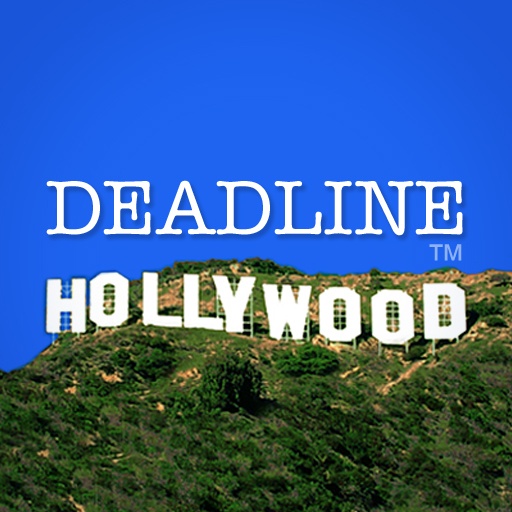Sundance Cues Up a Chorus of Music Docs and Features
 From “Once” to “20 Feet From Stardom,” “Searching for Sugar Man,” and “Whiplash,” Sundance has long been a key launchpad for music features and docs, and this year’s edition is primed with a slew of music-infused entries, from documentaries to features.
From “Once” to “20 Feet From Stardom,” “Searching for Sugar Man,” and “Whiplash,” Sundance has long been a key launchpad for music features and docs, and this year’s edition is primed with a slew of music-infused entries, from documentaries to features.
Even though Lucy Walker’s follow-up to “The Buena Vista Social Club” was forced to withdraw from the program at the start of the fest, one Sundance music doc managed to make ripples before films had even started screening, as Amir Bar-Lev’s four-hour Grateful Dead documentary “Long Strange Trip” was picked up for distribution by Amazon. Singers Adam Levine and Mary J. Blige will both be in town as castmembers for “Fun Mom Dinner” and “Mudbound,” respectively, and L.A.’s electronic music wizard Flying Lotus makes his directorial debut with “Kuso,” in Sundance’s Midnight section. Documentaries touch on everything from early rock icon Link Wray (“Rumble: The Indians Who Rocked the World”) to Japanese pop fandom (“Tokyo Idols”), and the Jack Black-starring feature “The Polka King” details the stranger-than-fiction saga of polka superstar-conman Jan Lewan.
From producer Pharrell Williams and Sundance veteran director Michael Larnell comes the dramatic competition entry “Roxanne Roxanne,” which tackles the life of rapper Lolita “Roxanne” Shante Gooden, whose appearance in the song “Roxanne’s Revenge” in 1984 helped spark one of hip-hop’s earliest, most legendary battles. Larnell’s film depicts the fateful performance and the “Roxanne Wars” that followed, while also delving into the teenage rapper’s difficult upbringing in the Queensbridge housing project, and her career afterward.
“She first started rapping when she was 10 years old, and there were a number of trials and tribulations that she dealt with before she became Roxanne at age 14,” says Larnell, who spent significant time with the real Shante to prepare the film.
In addition to supporting parts for Mahershala Ali and Nia Long, “Roxanne Roxanne” features screen newcomer Chante Adams in the title role, and Larnell recalls the difficulty of finding the right actor.
“We definitely wanted to go with someone new, and we didn’t really find (Adams) until maybe two weeks before shooting,” he says. “So that was kinda stressful, that was pushing it… But she had something. And once I started working with her I could tell that she was the real deal. Because it’s hard to do hip-hop as an actor, to actually be able to rap, have the mannerisms, the attitude, be able to perform onstage, but then offstage be able to be vulnerable. It’s a serious challenge.”
Also in dramatic competition, Zoe Lister-Jones used music as a window into her directorial debut, “Band Aid,” for which she also serves as writer and star. The film sees her character and her husband (Adam Pally) look to salvage their fracturing relationship by forming a garage band, and transforming their fights into songs. (Fred Armisen, who plays the couple’s oddball next-door neighbor, completes the trio on drums.)
“I was really interested in the intersection of two ideas,” Lister-Jones says. “First, exploring the ways in which a couple fights; and then exploring that through music.”
Lister-Jones – who sang in a band with several of her mother’s graduate students while still in high school – had written music for a film before, collaborating with Kyle Forester for songs in 2009’s “Breaking Upwards.” For “Band Aid,” Lister-Jones composed lyrics as she wrote the script, then brought them to Forester to turn them into fully-fledged tunes.
Lister-Jones, Pally, and Armisen performed the music live on set for the film, the director says, “because it always bugs me when I watch films that have a musical element when I can tell they’re being performed with playback. It always lacks that raw authenticity that I wanted to preserve in ‘Band Aid.’ It was also a great test (of the songs), because our crew members had to listen to them a lot.”
The Rolling Stones’ historic free concert in Havana, Cuba was the subject of a documentary that played Toronto last fall, but the group was beaten to the punch by electronic music outfit Major Lazer, who became the first major U.S. act to play the island nation since the easing of diplomatic tensions. That concert is the subject of documentary premiere “Give Me Future” from director Austin Peters.
Though the group’s performance is the main event in the film, Peters wanted to capture a bit of Cuba’s youth culture along the way. “I knew I wanted it to be about the Cuba that you don’t usually see on the news,” he says. “It seemed like an opportunity to see what it feels like to be a kid in Havana, and highlight some of these people.”
Finding young Cubans with interesting stories on such a tight schedule was easier said than done, however. “Unlike a lot of other countries, Cuba has something like 5% internet penetration,” Peters says. “There’s no one with a Tumblr down there telling you what they’re doing, so it was really impossible before going down there to do any sort of research on who we wanted to talk to. A lot of it was uncovered in the process.”
Fortunately, a number of Peters’ subjects ended up contributing to the film’s coverage of the Major Lazer concert itself. “Making a concert movie for a DJ is kind of an unusual thing,” he says. “It’s not like shooting a band where you’re watching a great guitarist, or watching Levon Helm’s drumming. It’s about the experience of being there and dancing and participating in a moment. So we gave a bunch of kids that we’d been hanging out with these little cameras that shot video, and said, ‘just shoot everything, take a video of the show for us.’ And they shot their whole experience.
“I wanted to capture the feeling of being there, because it’s just as much about the people in the audience as the people onstage.”
View this article at Variety.

 Previous Post
Previous Post
